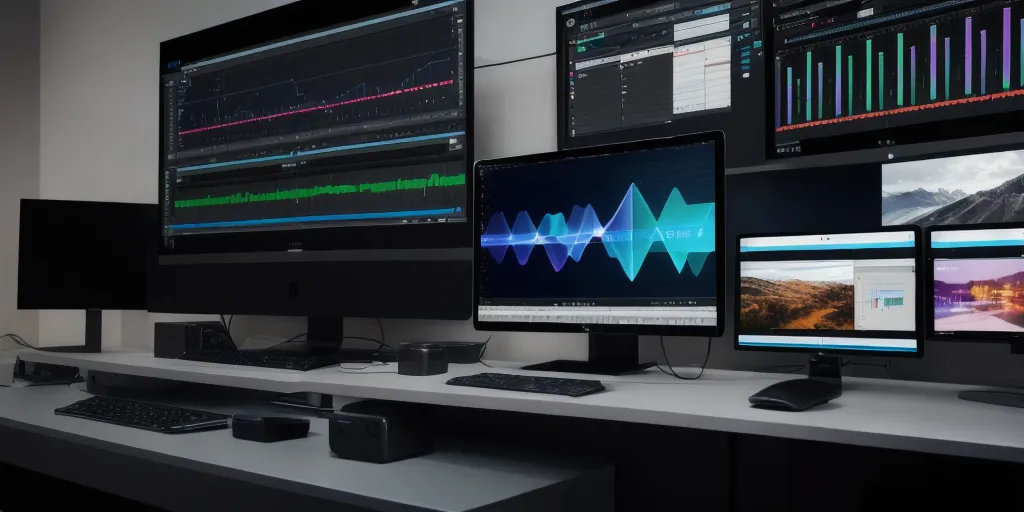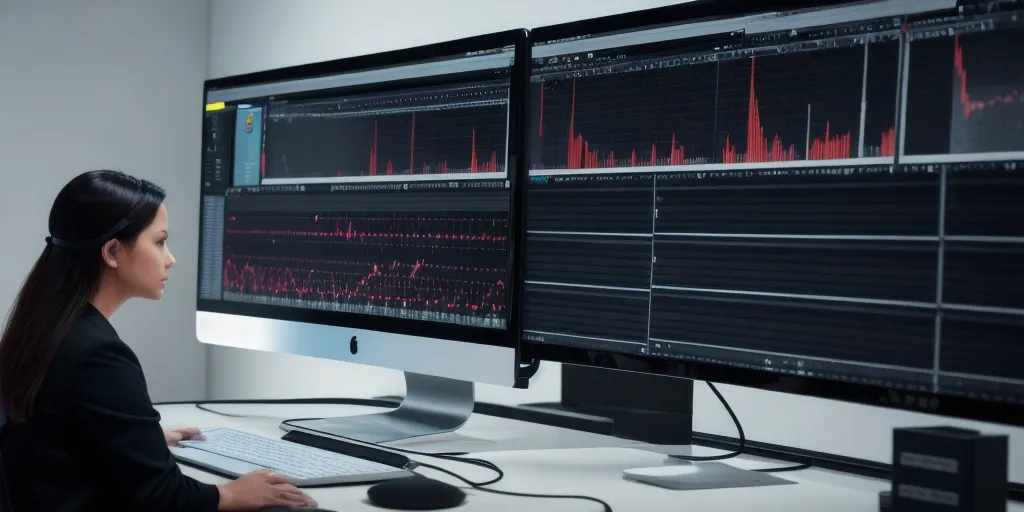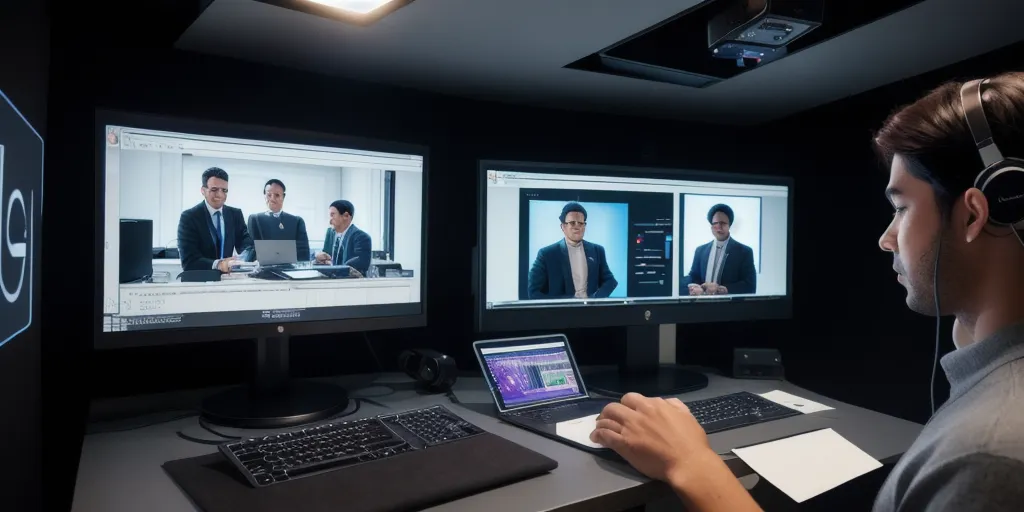To put an AI voice in a video, you can use various software tools and applications that offer text-to-speech functionality. One popular option is Adobe Premiere Pro, which allows you to import your video footage and then add a text layer with the desired dialogue.
You can then choose from a range of AI voices to apply to the text, adjusting the speed, pitch, and tone as needed to match the video’s content. Another option is using online platforms like Amazon Polly or Google Cloud Text-to-Speech, where you can input your script and select from a variety of AI voices to generate the audio file.
Once you have the AI voice audio file, you can easily sync it with your video using editing software like Adobe Premiere Pro or Final Cut Pro. By following these steps, you can effectively incorporate an AI voice into your video content, enhancing the overall viewer experience and adding a unique touch to your production.
How can adobe premiere pro help add ai voice to videos?

Adobe Premiere Pro can help add AI voice to videos through the use of its integrated Adobe Sensei technology. This powerful AI tool allows users to generate natural-sounding voiceovers for their videos by simply typing in the desired text.
By leveraging machine learning algorithms, Adobe Sensei is able to analyze the text input and synthesize a voice that closely mimics human speech patterns and intonations. This feature is particularly useful for content creators who want to add narration, voiceovers, or subtitles to their videos without the need for hiring voice actors or recording audio separately.
Additionally, Adobe Premiere Pro offers a variety of customization options for the AI voice, allowing users to adjust the pitch, speed, and tone to suit their specific needs. By incorporating AI voice technology into their video editing workflow, users can save time and resources while still achieving professional-quality results.
Overall, Adobe Premiere Pro’s integration of AI voice capabilities provides a convenient and efficient solution for enhancing videos with high-quality voiceovers.
What are some online platforms for generating ai voice audio files?

There are several online platforms available for generating AI voice audio files. One popular option is Amazon Polly, a text-to-speech service that uses advanced deep learning technologies to create natural-sounding speech.
Another platform is Google Cloud Text-to-Speech, which offers a wide range of voices in multiple languages and allows for customization of speech parameters. IBM Watson Text to Speech is another reliable choice, providing high-quality synthesized speech with customizable voice styles. Additionally, Microsoft Azure Text to Speech offers a variety of voices and allows for real-time speech synthesis.
These platforms are user-friendly and offer a range of features to create AI voice audio files for various applications, such as virtual assistants, e-learning modules, and audiobooks. By utilizing these online platforms, users can easily generate high-quality AI voice audio files to enhance their projects and provide a more engaging user experience.
How do you sync ai voice audio with video using editing software?

Syncing AI voice audio with video using editing software can be achieved through a few simple steps. First, ensure that both the AI voice audio file and the video file are imported into the editing software. Next, align the beginning of the AI voice audio waveform with the corresponding point in the video timeline.
This can be done by visually matching up the waveforms or using the software’s audio syncing tools. Once the audio and video are synced at the beginning, play through the video to check for any drift or lag between the two. If there are any discrepancies, adjust the audio track as needed to keep it in sync with the video.
Additionally, make sure to fine-tune the audio levels to ensure that the voiceover is clear and balanced with the video’s sound effects and music. Finally, preview the video to confirm that the AI voice audio is seamlessly synced with the visuals.
By following these steps, you can effectively sync AI voice audio with video using editing software to create a professional and cohesive final product.
What adjustments can be made to ai voices in video editing?

When it comes to adjusting AI voices in video editing, there are several key adjustments that can be made to enhance the overall quality of the audio. One important adjustment is to modify the pitch and tone of the AI voice to better match the desired mood or tone of the video.
This can be done by using audio editing software to raise or lower the pitch, adjust the speed of the voice, or add effects such as reverb or echo. Additionally, adjusting the volume levels of the AI voice can help ensure that it is clear and audible throughout the video.
Another adjustment that can be made is to fine-tune the pronunciation and enunciation of the AI voice to improve clarity and reduce any potential mispronunciations. It is also important to consider the pacing of the AI voice, as adjusting the speed at which the voice speaks can help maintain the viewer’s attention and engagement.
Overall, by making these adjustments to AI voices in video editing, creators can enhance the quality of their videos and create a more professional and polished final product.
What steps can be followed to effectively incorporate ai voice in videos?

Incorporating AI voice in videos can greatly enhance the overall viewer experience and engagement. To effectively incorporate AI voice in videos, several key steps can be followed. Firstly, it is important to choose a high-quality AI voice that is natural-sounding and engaging to the audience.
This can be achieved by using advanced AI voice technology that offers a wide range of voice options to choose from. Secondly, the script for the video should be carefully crafted to ensure that the AI voice delivers the message clearly and effectively. This includes paying attention to tone, pacing, and pronunciation.
Additionally, it is crucial to synchronize the AI voice with the visuals in the video to create a seamless and cohesive viewing experience. Finally, testing the video with a focus group or beta testers can provide valuable feedback on the effectiveness of the AI voice integration.
By following these steps, content creators can successfully incorporate AI voice in videos to enhance the overall quality and impact of their content.